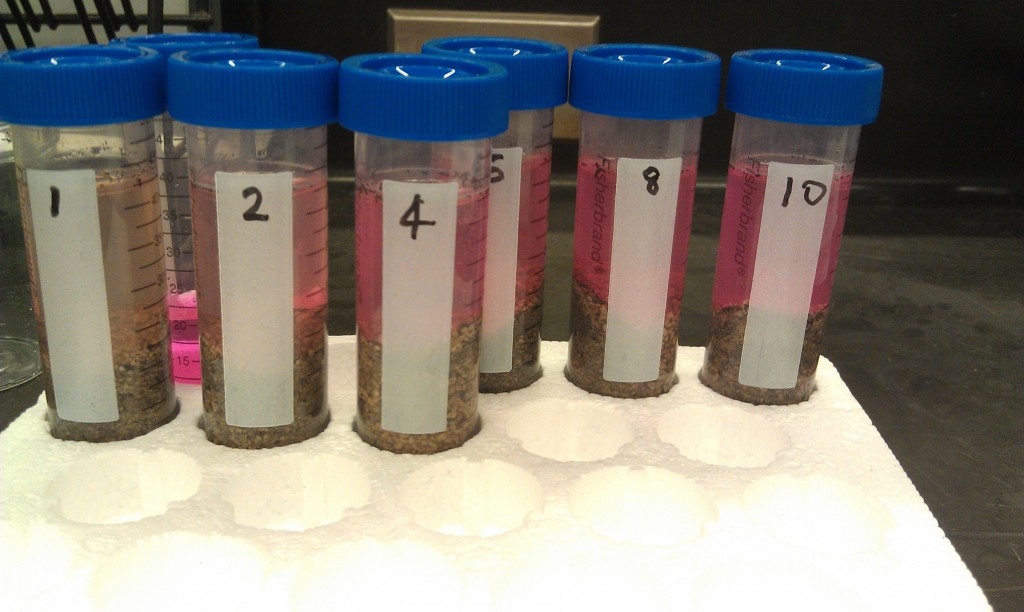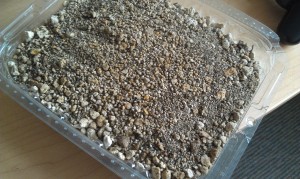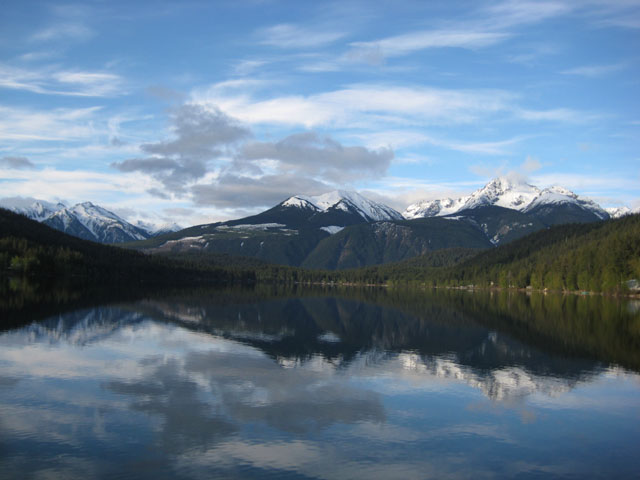We are now in the midst of our CBEL project, with both the Lab and AutoCAD groups starting their individual tasks.

The lab group has just begun the process of soil testing in the Environmental Lab in the CEME building at UBC. Although the four group members in charge of lab testing (David, Erik, Shuhan, William) have had little experience with soil absorption testing in the past, we have been learning as we go and making good progress. The lab testing procedure is as follows:
- Sieve soil to remove fines/coarse particles. We chose to test the soil particles between 0.25mm and 2mm.
- Prepare various concentrations of Rhodamine WT dye (we used concentrations between 2-16 mg/L)
- Get initial colorimeter readings for each dye concentration (we used wavelength of 540nm)
- Prepare 27.5g of soil and 30ml dye and place in polyethylene centrifuge tubes. Repeat for each dye concentration
- Place the tubes in a rotary device which mixes at 3.5rpm, at room temperature (~20 degrees). Leave for 24hrs.
- After 24hrs, remove tubes from rotary device and place in centrifuge for 15 minutes. This is to remove the fine patricles which may affect the colorimeter readings
- Extract solution from tubes using syringe, then pass it through a 0.45µm membrane filter to ensure even the finest particles have been removed. The resulting solution is collected in a test tube
- Place test tube in colorimeter to get final reading
- Determine absorption using the colorimeter results
We are very much looking forward to seeing the results! Many thanks to Paula Parkinson, who allowed us to use the lab and provided a lot of help along the way. Without her, this would not have been possible!
The AutoCAD group members have recently had a meeting with Don, who provided some more details on the specifics of what he expects from the model. Kevin and Ray will begin working on the model next week.
We aim the complete lab testing by Thurs 21st March at the latest. The AutoCAD group will also aim to complete their portion by this date, although it will probably be completed ahead of schedule.


 Gun Lake, BC (Photo Credit: EcoBC)
Gun Lake, BC (Photo Credit: EcoBC)